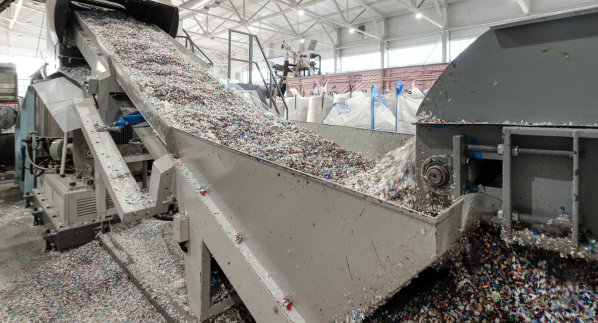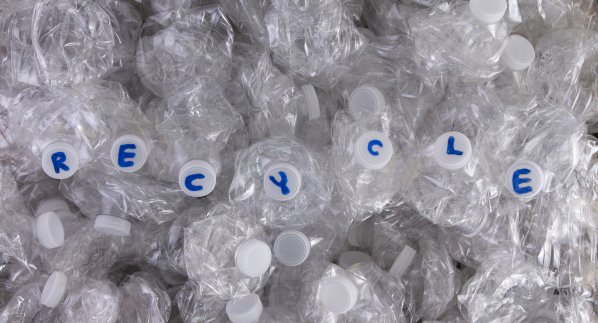Maximizing Sustainability: The Comprehensive Guide to PET Recycling in the Business Sphere
- 2024.05.16
 Flying Tiger
Flying Tiger
Introduction
Polyethylene terephthalate (PET) plastic is extensively used across various industries, serving as the primary material for packaging beverages and forming the textile fibers in our apparel. Its widespread adoption is largely due to its impressive versatility and effectiveness in preserving product integrity and freshness.
However, despite these benefits, PET plastic poses significant environmental challenges. It contributes extensively to global waste and pollution, often ending up in landfills and oceans. This underscores the urgent need for effective PET recycling strategies. By enhancing our understanding and implementation of PET recycling processes, businesses can mitigate the environmental impact while capitalizing on the opportunity to foster positive change.
Understanding PET Recycling

Can PET Be Recycled?
A common question arises: Is PET recyclable? Indeed, PET is one of the most frequently recycled plastics, attributed to its robustness and the established recycling systems in place to process it efficiently. This widespread recyclability of PET underpins its favorable position in the recycling industry, ensuring that it can be repurposed effectively with the existing infrastructure.
The PET Recycling Process
Now, PET recycling is primarily divided into two types: mechanical and chemical.
In mechanical recycling, PET items are gathered, cleaned, and then shredded into tiny pieces. These pieces are melted and reshaped into new PET products. Mechanical recycling is commonplace across various industries because it directly turns old PET materials into new ones without changing their chemical makeup.
Chemical recycling, on the other hand, breaks down PET into its basic elements or monomers. These elements are cleaned. Then, they are reassembled into either new PET materials or different products. Chemical recycling is becoming a lot more popular because it addresses some of the drawbacks of mechanical recycling, like the reduced quality of PET after it has been recycled multiple times.
Current Technologies in PET Recycling
As the world of recycling evolves, we're seeing some exciting advancements that are making the process of recycling PET plastics more efficient and effective than ever before. One of the standout innovations in this space is something called enzymatic recycling, which falls under the umbrella of chemical recycling. What makes enzymatic recycling so great is its use of specially engineered enzymes that break PET plastics down on a molecular level.
Now, you might wonder why this matters. Unlike traditional recycling methods that use a lot of energy and resources, enzymatic recycling operates on a different principle; it breaks down plastics without the need for high heat or significant pressure. On the plus side, this opens up new possibilities for recycling PET plastics that were previously considered difficult or impossible to recycle. By breaking down plastics at a molecular level, enzymatic recycling can handle a wide range of PET products and turn them into something new and useful again.
The Business Case for PET Recycling
Strategic Advantages of PET Recycling
Recycling PET is more than just a commitment to environmental stewardship; it also provides tangible economic benefits and enhances a company's reputation. By opting to recycle rather than using new materials, businesses not only reduce their ecological footprint but can also achieve considerable cost savings.
Economic Benefits
Recycling PET allows businesses to reuse materials, significantly reducing the need to purchase new raw materials. This practice can lead to substantial cost savings, as the expense associated with sourcing and processing new plastics is often high. By reintroducing recycled PET into their production cycles, companies can decrease production costs and enhance profitability, making recycling not only an environmentally sound choice but also a financially strategic one.
Environmental Impact
Every instance of PET recycling helps divert plastics from landfills and marine environments, which are currently overwhelmed with waste. Additionally, the recycling process generally consumes less energy compared to the production of new plastics, resulting in lower carbon emissions and reduced environmental impact. By minimizing reliance on virgin materials, companies contribute to a significant reduction in pollution and energy consumption.
Social Implications
In today’s market, consumers increasingly favor brands with strong ethical and environmental values. Companies that actively engage in PET recycling demonstrate their commitment to sustainability, resonating with environmentally conscious consumers and stakeholders. This can enhance customer loyalty, improve brand image, and potentially increase market share among targeted demographics who prioritize corporate responsibility.
Case Studies and Industry Trends
Research and case studies within the beverage industry have demonstrated that investments in PET recycling can positively affect a company's bottom line. These initiatives not only prevent waste but also position companies as leaders in sustainability, appealing to both investors and consumers who value environmental responsibility. This alignment of environmental and business goals creates a win-win scenario, supporting long-term business viability and ecological health.
The Role of Businesses in Recycling
Companies have a crucial role in mitigating plastic pollution. By incorporating PET recycling into their operational strategies, businesses set industry benchmarks and influence consumer behavior. This leadership in recycling promotes a culture of sustainability, encouraging other companies and individuals to adopt similar practices. As businesses innovate and improve their recycling processes, they not only comply with increasing regulatory demands but also drive the shift towards a more sustainable future in commerce.
Implementing PET Recycling in Your Business
Practical Steps for PET Recycling
- Conduct a waste audit to understand the amount and types of PET materials in your waste stream.
A waste audit involves closely examining the trash your company produces to identify what portion is made up of PET plastics, such as bottles and food containers. This step is crucial because it provides a baseline measurement of how much PET you're currently discarding. With such information, you can set realistic recycling goals and monitor progress over time, so your efforts do not go to waste. - Explore partnerships with local recycling facilities or programs.
Not all recycling facilities are equipped to handle every type of material. Identifying—and then partnering—with facilities that specialize in processing PET plastics can make sure that the materials you collect will be recycled properly. Besides, these partnerships can also offer insights into the best practices for collecting and sorting PET waste. - Educate employees on the importance and methods of recycling.
The success of any recycling program hinges a lot on participation. Offering training sessions and resources to educate your workforce about why recycling matters and how to do it correctly empowers them to become active participants in your environmental efforts. In short, motivate employees to contribute to your company’s green initiatives. - Seek certifications that endorse your recycling efforts.
Obtaining certifications from reputable environmental organizations can significantly boost your brand's image. These certifications serve as proof that your business is committed to sustainable practices, distinguishing you from competitors. They can also make your company more attractive to eco-conscious consumers and clients who prefer to do business with environmentally responsible companies.
Recycling is no longer just an operational activity; it's a strategic imperative that reflects a business's commitment to sustainability and environmental responsibility. Staying ahead of future trends in sustainability can offer a competitive edge in an increasingly eco-conscious market.
Takeaway
PET recycling presents a golden opportunity for businesses willing to invest in sustainable practices. It not only aids in mitigating environmental impact but also bolsters economic performance and brand reputation. As the business world evolves, the integration of PET recycling operations stands not as an optional activity but a necessary pivot towards a sustainable future.
To learn more about effective solutions for recycling PET materials and enhancing your sustainability efforts, check out Flying Tiger's professional solution to PET flake recycling. Start transforming your business's environmental impact today!
Back






